
Sign up for The Wanderful newletter
Join our growing community of people looking to live the simple life!
Let’s build your van now
Join our growing community of people looking to live the Simple Life


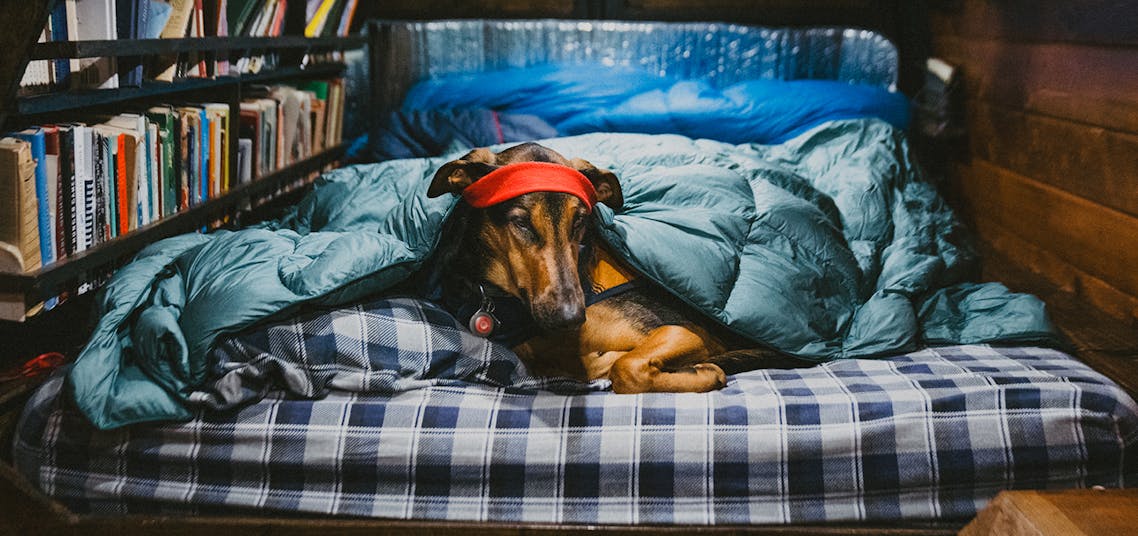)
However, there’s a contingent of people doing the complete opposite.
Many Vanlifers opt in to chasing winter and will outfit their rigs with what it takes to not only survive, but thrive as they pursue all the good colder months and climates.
A season of Vanlife in the winter looks a lot different. There are a ton of ways to make this lifestyle possible, but being somewhat of a veteran to the winter scene leaves me with a few logistical ideas to offer.
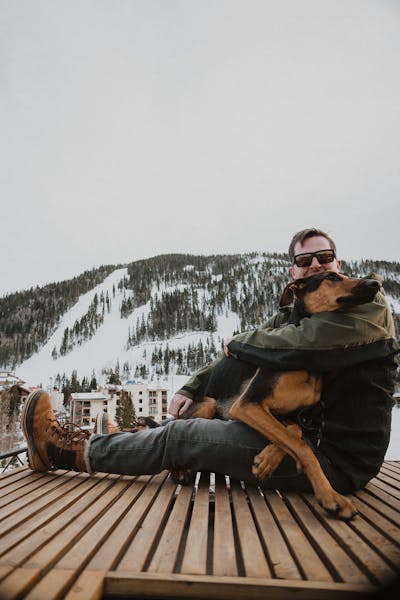
I love my build – But knowing what I know now, there are certainly some things I would have done differently from the start.
With so many options to explore, you should always ask yourself what kind of lifestyle you want and make sure your build is ready for the challenge.
If you know that cold winters are in your Vanlife future, the most important items to consider are:
When it comes to the temperature inside your van, the last thing you want to be is miserable or “just surviving”. You also want to stay safe on the road.
Keep in mind there are plenty of ways to stay warm while living in your van in the winter, but ultimately you’ll have to decide what you need to stay comfortable.
Surprisingly, I didn’t even own a heater in my first winter on the road! I relied on insulation and heat from the stock heating vents alone from driving to keep the car warm. I personally didn’t mind the cold so much and was happy to layer up.
However, once I got a dog, and decided I didn’t feel like wearing a coat all the time, I put some money towards making some improvements. The 2 main build considerations I took revolve around:
I may not have had a heater for my first winter, but what I did have was good insulation. So, let’s talk over a few approaches here.
Your insulation starts as one of the first things on your “to do list” when building out a van.
Insulation is one of the most important things to dial in before you begin your build because:
Aside from winter, insulation is also going to be the #1 way you’ll stay cool when the sun is beating down on your van in the summer.
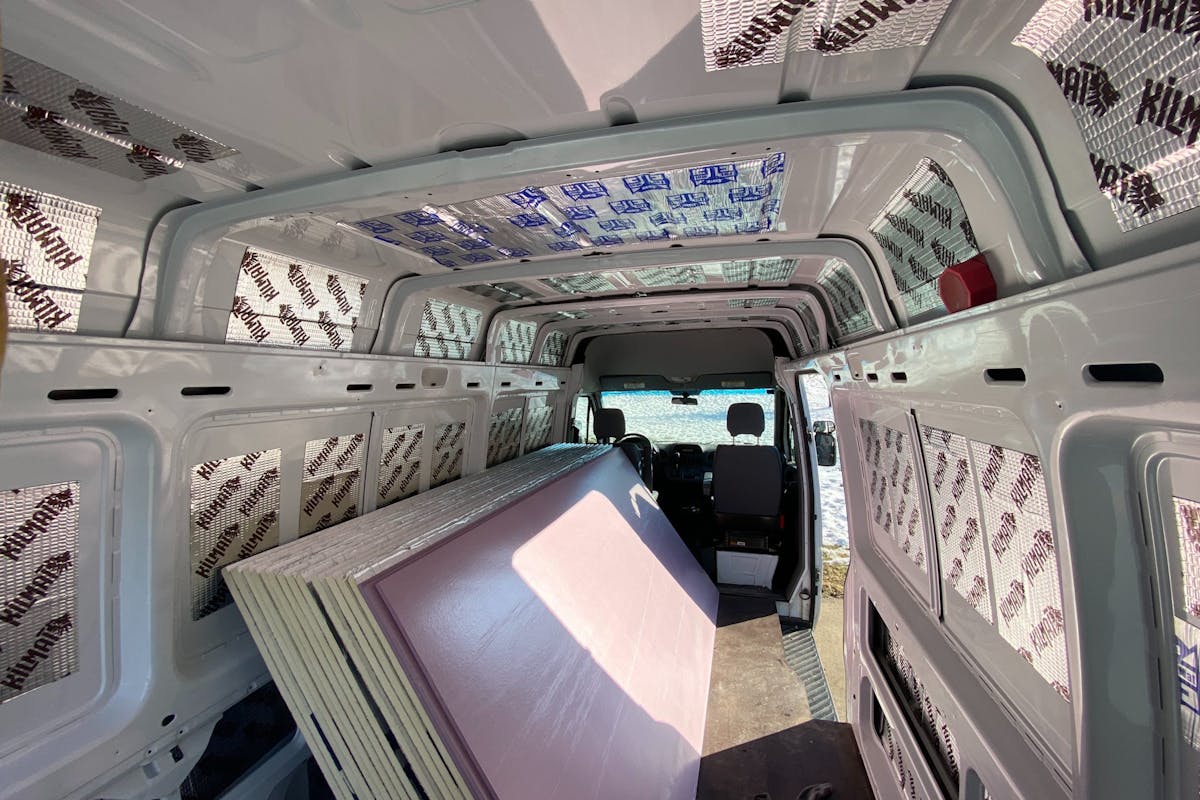
I went with a layered approach for insulation. I actually have Fat Cat Max sound deadening on all the panels of the van which quieted my ride down a ton right from the beginning.
The insulation, however, started with a small layer of air between the wall and foam board insulation. A layer where air can flow freely is vital to prevent any moisture buildup from sticking around too long. “Airtight” moisture barriers are pretty pointless in vans as they won’t actually be airtight, but they may prevent a healthy flow of air. If you do want a layer of plastic in your walls, it helps to choose an antimicrobial layer that’s meant to handle moisture effectively.
Then, since I had it, I put a layer of Reflectex to cover up the seams of foam board to the metal in the van. Finally, I filled some of the bigger gaps with spray foam insulation.
Caution: If you put in too much it can expand and push out the paneling on the van.
Once all that was done, I put up my shiplap and got to building.
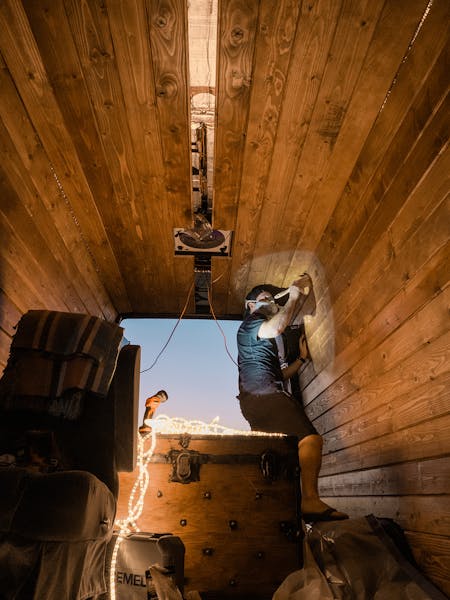
Some alternative forms of insulation include wool. Make sure you’re not allergic as I’ve heard horror stories of people insulating their whole van with wool only to experience irritation.
You might also opt for a spray foam kit but yield the same caution as over insulating, which is hard to do perfectly, and too much may bow out the metal or whatever you use to cover your walls.
There’s also the classic pink insulation, which may be the most economical version, but could eventually settle if you don’t do it right. Each way has pros and cons when it comes to cost, ease, health concerns, and warmth.
The floor is another area where you can lose a ton of heat. While it’s unlikely you’ll want to use a full 2 inches of insulation, even a layer of half-inch foam board will help. That and an antimicrobial sheet to prevent any issues from the inevitable spills which might occur will do wonders to keep your feet and the overall temp of the van a little warmer in winter.
Too thick of insulation can cause some issues if it starts to lose it’s loft or create low spots on your floor.
Other significant ways to lose heat are through the driving area and windows. I have a custom temperature controlling screen that seals pretty well to separate the driving area from my liveable space.
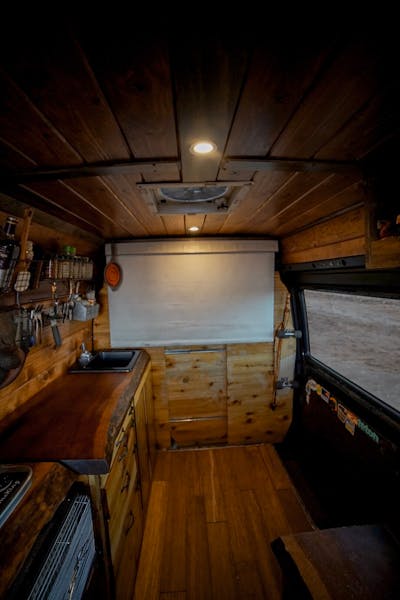
Like most, I have a form of reflectix that’s fitted to the windows to help insulate. Even things as simple as shades or a cloth window cover can do wonders to make your place stay warm.
Next, you’ll want to consider a heat source. The two most popular options are:
Electric heat takes a ton of energy and given you’re chasing winter, the sun might not be too reliable to charge your batteries.
Propane is the heat source that I use, but you have to use extreme caution. This involves:
CO is heavier than air, so unlike a smoke detector, it needs to go near the ground rather than up high to detect any gas that might become unhealthy (i.e. deadly). Making sure your heat source is a little lower and no one/dog/anything sleeps below your carbon monoxide detector is extremely important.
The pro’s of using propane are:
The cons are:
Another option is the diesel heater. This heater produces dry air and hooks up directly to your fuel line in the van. It also pumps out hot air rather than radiate it from the heat source.
The most popular spot to install a diesel heater is under one of the seats. Check out the van build guide for more info on how Scott installed an Espar Heater in his van – he loves it.
It’s a safe option, as well as vents to the outside. The only cons are the expense is much more significant, the install is harder, and it can sometimes make noise.
Other than these few factors, it’s probably most people’s ideal solution.
Now, some people have installed wood-burning stoves in their vehicles.
Along with propane, we’re going to leave you to do your due diligence on this install process as creating a heat source from an actual fire in your vehicle poses apparent risks.
The reward is your home having a cool aspect, the cons are not being able to regulate the heat as well, plus you have to have a chimney and face obvious risks when it comes to flames.
Once you’re prepared to stay toasty inside your van, you’ll want to make sure your vehicle is ready to tackle the potentially hazardous winter roads.
Preparedness involves:
Ideally, a four-wheel drive is a great thing to have. Many vans have this, and you can convert your van to have 4WD. However, only new Sprinter models and some other ProMaster versions have the dealer option of all-wheel or four-wheel drive capabilities.
Don’t fret if you don’t have 4WD. You’ll still be fine.
Your tire choice is very important. Choose four-season tires or mud tires that will stay soft even at below freezing temps.
I have the Grabber AT/X tires that have treated me well from snow to mud in the desert and everywhere in between.
My 2006 Dodge Sprinter 3500 is a two-wheel rear-wheel drive, which leaves some people wondering how I get around in the winter. However, I was the only one not to get stuck when I went on a trip to Durango, Colorado, during a snowstorm last year with my two friends, both driving newer four-wheel-drive Toyota Tacomas.
The difference was that I had chains on my four tires (I don’t put chains on the inside wheels of my dual rear wheels because it’s near impossible to get them on and off).
Ideally, you have 4WD with chains and can power through most anything. But with chains I’ve driven through deep Colorado storms and the real test of wet Northern California mashed-potato-powder. The weight of the van and chains goes a long way toward powering through powder! Without chains, though, you might find yourself struggling.
*Note, I also grew up in Michigan where learning to drive in deep snow is a learned skill from early on.
The number one thing you can do is take your time, know when to err on the side of safety, and use your mobility to avoid perilous regions when storms roll through.
Always try to arrive before a storm cycle when you see it coming or wait till plows can get through to clear the roads before navigating to your favorite ski resort!
Worst case scenario, you’ve got a nice toasty van to post up in and wait a storm out before driving on!
If you do get stuck, make sure you’ve packed:
When vanlifing in winter, the most important thing is to have a safety plan!
Know what it takes to be comfortable, safe, and how to recognize issues that might arise; from running out of fuel for your heat source to encountering conditions too dangerous to get through.
And of course, always have a warm coat and gear just in case!
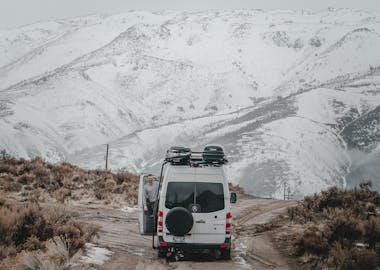)
From the classic “ski bum” to the corporate remote-working-millennial, there are loads of people living in vans and cars.
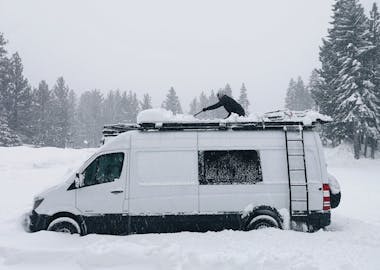)
If colder temps are in your vanlife future, it’s time to think about how you plan to winterize your van.
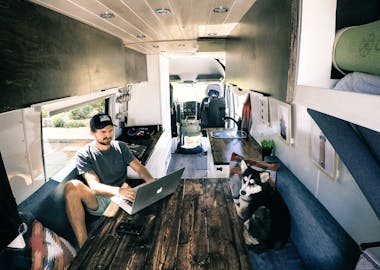)
Whether you’re planning a long road trip or you’re looking to be a full time digital nomad, you may be wondering how to get internet while on the road.